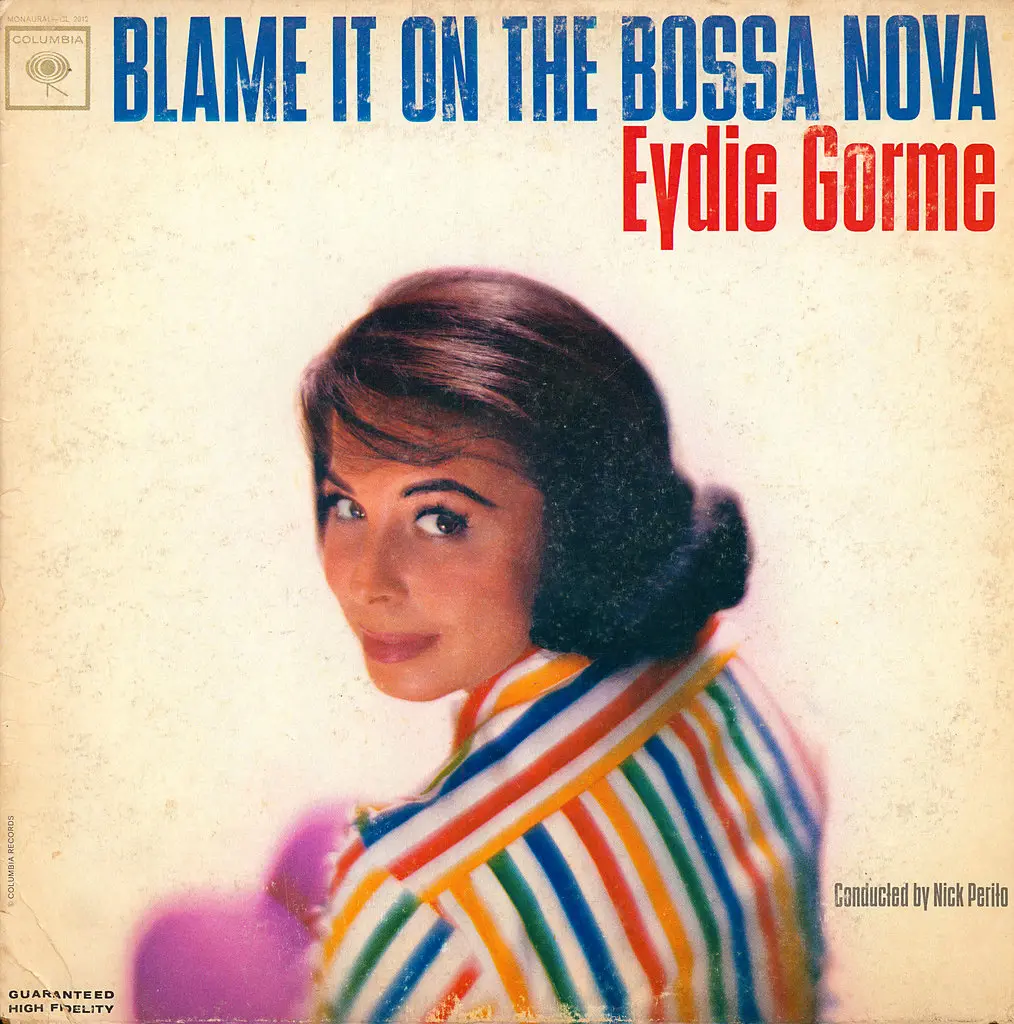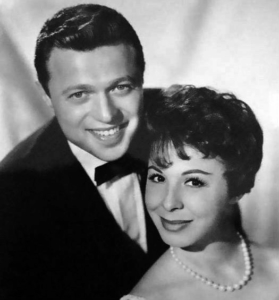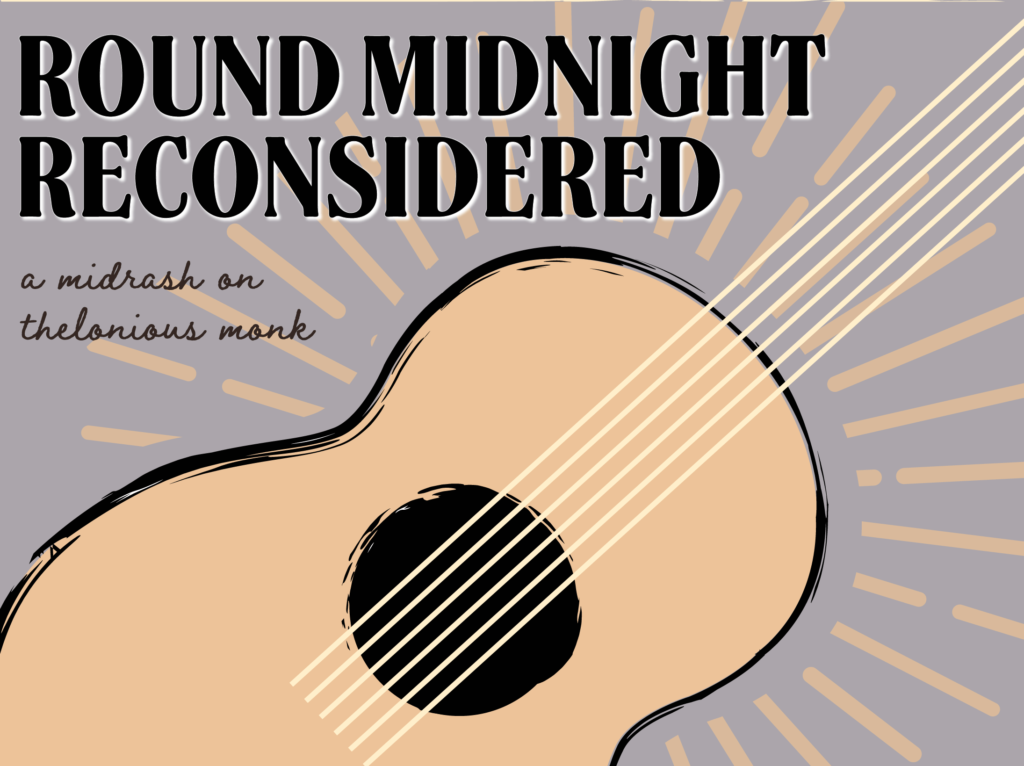Jewish American Heritage Month: How a Female, Sephardic Singer Changed American Pop Music in the 1960s

Gorme
The Associated PressA Sephardic Jew was once one of Latin America’s most beloved singers, however, she was an anomaly to most Americans. Eydie Gormé, the late pop singer, could sing beautifully in fluent Spanish despite not being a Latina. Many show business insiders (and some fans) knew she was Jewish, but with her olive skin, black hair and dark eyes, she didn’t look like Zsa Zsa Gabor, Lauren Bacall or other Ashkenazi Jewish female stars at the time.
This unlikely rise of Eydie Gormé, who passed away in 2013, has always intrigued me. With Jewish American Heritage Month this May, she illustrates the deep diversity of the Jewish people.
When Gormé auditioned for “The Steve Allen Show” in 1953, even show producers were puzzled. “They took one look at me and weren’t so sure. They were looking for a blonde, someone who looked like Marilyn Monroe. And I was, well, me. With my bangs,” she said in a 1992 interview.
But Gormé proved to be one of the prolific Sephardic Jewish entertainers of the twentieth century. A native of the Bronx, Gormé was born Edith Gormezano on Aug. 16, 1928 to a Sicilian father, Nessim, a tailor, and a Turkish mother, Fortuna, both of whom were Sephardic Jews. Edith grew up speaking English and Ladino, also known as Judeo-Spanish. Ironically, her parents never invested in music classes for little Edith, as they had for her two siblings, who quickly lost interest in their lessons. She attended William Howard Taft High School alongside Stanley Kubrick and, after graduation, worked as a Spanish-language translator for The United Nations, taking night classes at City College. Weekends were spent singing in bands, beginning with her friend, Ken Greenglass (she later toured with the Tommy Tucker band and played with Tex Beneke and Ray Eberle).
But Gormé really got her start on “Cita Con Eydie” (“A Date with Eydie”), a Spanish-language radio program beamed by the Voice of America into Latin America, which prompted her name change from Edith to Eydie. When Fortuna (her mother) learned that Eydie was contemplating changing her last name as well, she said, “It’s bad enough that you’re in show business. How will the neighbors know if you’re ever a success?”
Already a well-known band singer and nightclub entertainer, Gormé was delighted when her two-week contract at “The Steve Allen Show” turned into months and eventually, years, as the program evolved into “The Tonight Show” in 1954, affording her more chances to highlight her soulful singing. The show also introduced her to a dashing, young cantor’s son from Brooklyn — a fellow cast member named Steve Lawrence — whom she wed in 1957 in Las Vegas. “The beauty” of the show, which had few rehearsals, was, “if you screwed up, that’s what people loved,” she told The Los Angeles Times in 1996.
Audiences loved watching Gormé and Lawrence, particularly when they toured together on stage. In 1962, Gormé had one of the biggest solo hits of her career with 1963’s “Blame it on the Bossa Nova.” But it was her 1964 Spanish-language song, “Amor,” with which Gormé was and remains most associated in Spanish-speaking countries. Recorded with the Mexican combo band Trio Los Panchos, “Amor” was the brainchild of Columbia Records President Goddard Lieberson, who suggested Gormé sing a song in Spanish. Thanks to Gormé and “Amor,” more and more recordings were produced for the Latino market. Lawrence and Gormé also toured Latin America and played for exhilarated fans. In 2004, Lawrence said, “Our Spanish stuff outsells our English recordings. She’s [Eydie] like a diva to the Spanish world.”

Back home, Gormé and Lawrence were known as “showroom sweethearts” who played Las Vegas casinos including the Sands, the Desert Inn and Caesars Palace (they headlined at the latter for 10 years). “I had a lot of what they call turntable hits,” Gormé once said. Gorme also performed on Broadway and was a two-time Emmy winner, along with Lawrence for their television specials, one of which honored George Gershwin. Gormé also won two Grammy performances for her singing career and in 1995, the duo was inducted into the Songwriters Hall of Fame. In 1989, they started a record label called GL Music.
As performers, Gormé and Lawrence were known for two trademark practices that made them inarguable standouts: First, they played off of their “old married folks” identity on stage by using relatable husband and wife banter, rather than avoiding it. But in their case, the banter offered playfully sexual tones that were lovingly naughty for the time. During their nightclub act, as Lawrence would dip Gormé in a dramatic dance, she would say, “I’m getting nauseous,” to which he would respond, “That used to excite you.”
But the biggest standout trait of the duo was their unabashed and well-known rejection of what was then an emerging style of music called rock ‘n’ roll. In the best way possible, they were too sophisticated; their style too reliable, which made them a beautiful fit with the old “American standards” — songs composed by Cole Porter, Irving Berlin, Rodgers and Hammerstein and the Gershwin brothers. They liked to say, “no punk, no funk, no rock, no schlock.” As Lawrence said about their performances in a 1989 interview, “People come with a general idea of what they’re going to get. They buy a certain cereal, and they know what to expect from that package.” For audiences, that meant the guarantee of a tux and gown, whether the duo was on television or on a Las Vegas stage. As Gormé once said, “If we came out in jeans and sneakers, it would be ridiculous. We’re stuck with who we are.” In an age of unparalleled changes in American culture and music, Lawrence and Gormé never failed to showcase class to audiences large and small.
On August 10, 2013, Eydie Gormé died after a brief illness in Las Vegas, six days before her 85th birthday. In a statement, Lawrence said, “Eydie has been my partner onstage and in life for more than 55 years. I fell in love with her the moment I saw her and even more the first time I heard her sing. While my personal loss is unimaginable, the world has lost one of the greatest pop vocalists of all time.”
Though not a singer, I am deeply inspired by Gormé’s life and her choices. In an age when many would have considered her proximity to Spanish language and culture a controversial liability for an American songstress, she actively used her talent and identity, rather than subduing them, to become a bonafide superstar. Can you imagine how proud and jubilant Sephardic Jewish audiences in America must have felt in seeing Gormé beamed into their living rooms via the television screen week after week?
I have been so moved by Gormé that I hope to pay my respects to this legendary woman by bringing flowers to Hillside Memorial Park in Los Angeles, where she is buried.
Ironically, despite eschewing rock music for so long, one of Gormé and Lawrence’s most beautiful performances, if you ask me, is their cover of the 1994 megahit “Black Hole Sun” by the grunge band, Soundgarden. Somehow, the duo managed to take the dreary, nearly apocalyptical song and infuse it with so much beauty and soul that it almost seemed like they were smiling as they were singing. In contemplating the life and contributions of Eydie Gormé, one lyrical line from “Black Hole Sun” captures the essence of this remarkable performer: “No one sings like you anymore.”

